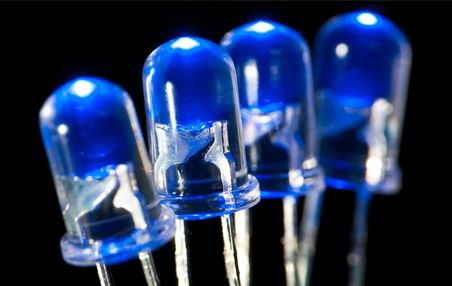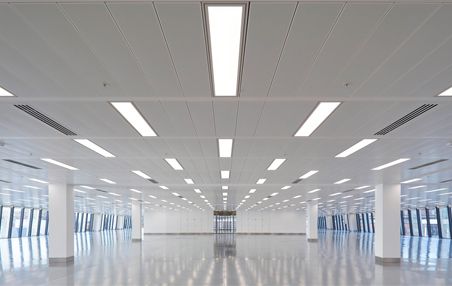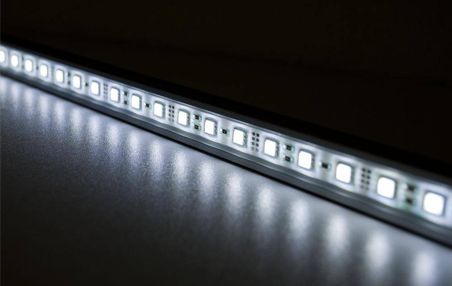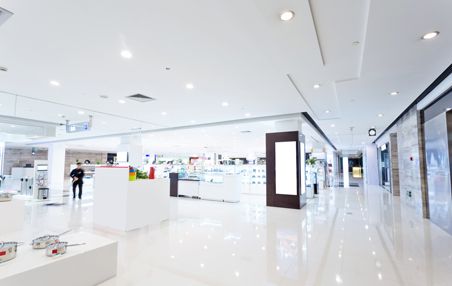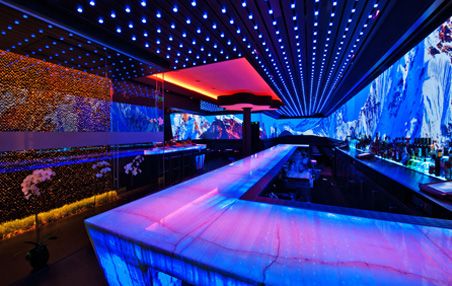WHAT IS L.E.D.?
The LED (Light Emitting Diode) is a solid semi-conductor high strength body that receives an electrical power of low intensity and emits light efficiently with a high output rates.
It´s a kind of solid-state lighting with organic light emitting diodes and which by its nature is more efficient converting electricity to light. They are being incorporated in light bulbs and equipment for general lighting applications.
The use of those lamps will grow exponentially in the next years. In the near future they will replace domestic and commercial lighting technology (incandescent, fluorescent, etc.).
Now they are being used mainly in commercial and household products, not only reducing energy costs but also optimizing the maintenance and offering new opportunities for the creativity in lighting and in environment designs.
BENEFITS OF LED TECHNOLOGY
LED technology has nine main advantages that give added value to this technology that we describe below.
Long Life
Thanks to a proper dissipation of heat produced by the diode inside the luminaire are guaranteed 20,000 hours of life. The key is a greater surface in direct contact with the air which allows it to retain more than 70% of the original luminous flux.
Less maintenance
It does not melt, but undergoes a degradation of luminous flux. It is considered that its life ends when its brightness is less than 70% of its initial value and last much longer than conventional light sources so it is not necessary to invest in spare parts constantly.
High energy efficiency
Because of the extraordinary and continued evolution towards energy efficiency, the light output can not be compared with the LED consumption. Because of this their efficiency is not measured in watts, but with the calculations of lumens per watt or lumens per LED.
Wide range of colors
The shades of white with color temperatures are ranged between 2,700 K and 8,000 K. Filters are not required, so a reduction of the efficiency of the light is avoided because the LED already provides the desired color. The best way to get white light is covering with blue color with a phosphor layer..
Faster switching-on
The LED has the fastest switching-on compared with conventional light sources and their useful life is not reduced by repeated actions of switching-on and switching-off. One example are cars brake lights, where it is used because it is very fast and it does not need to wait passing the power through the ballast and switching-on.
Extreme ruggedness
It is not that the LEDs are robust (pressed with a finger obviously optics gets damaged), but this technology is resistant to continuous vibrations.
Direct light
The LED light is fully directional, so there are not lighting reflection losses. This contributes significantly to increase the efficiency and profitability of the luminaries. A clear example is the technical applications as a downlight having an opening of 120 ° avoid having reflection losses.
Ecological
Almost the entire LED is recyclable. The compact design reduces the volume of the luminaire and of the residue. It has not mercury or other harmful elements to the environment. Besides, its ease to be adjustable allows to reduce the energy consumption.
Lack of UV light
The LEDs used for lighting only flow in the visible spectrum of light that the human eye can perceive. LEDs do not emit ultraviolet light, whereby the heat of infrared and the wear of the materials is avoided.
COMPARISON OF CONSUPTION
| Type of light | Incandescent | Low consumption | Led |
|---|---|---|---|
 |
 |
 |
|
| WatTs | 40 W | 10 W | 8 W |
| Lumens | 400 lm | 400 lm | 480 lm |
| Lumens / Watts | 10 lm/W | 40 lm/W | 60 lm/W |
| Energy saving |
– | 75% | 85% |
| Duration | 1.000 h | 6.000 h | 20.000 h |


